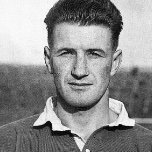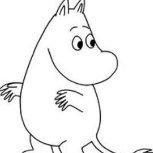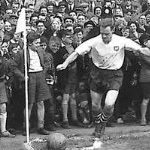Leaderboard
Popular Content
Showing content with the highest reputation on 08/10/24 in all areas
-
I wouldn't listen to Samuel if he was telling me the formula to create gold out of thin air. The blokes a shill for the middle east and was out of touch 10 years ago let alone now. What is a more pertinent point from that Liverpool game and ours is both teams completely dominating yet being penalised like they're Pulis' Stoke City. Liverpool didn't get a free kick until an hour in in that game. We had 64% possession against STJ yet inexplicably conceded 22 fouls to their 12. Now bias would be a big accusation but it does make you wonder - the leniency afforded to the smaller clubs when playing the bigger sides is very real. Unless it is just a Rangers thing - I watch us play and end the game more often than not thinking we didn't get a 50/50 all game. Maybe I'm howling at the moon though 🤷3 points
-
Cammy F - where were you on the 4th of Oct? You are not obliged to say anything but.......2 points
-
In both the Lyon and St Johnstone games we should have had penalties imo, so we seem to be getting the short end of the stick at home and abroad. My Dad reckons defenders would have to pull an axe out of their sock and scud big Cyriel on the head with it for us to get a penalty. I cannot disagree.2 points
-
Johan Neeskens obituary: Dutch midfielder in celebrated ‘Total Football’ team Neeskens was a key part of the team that narrowly failed to win two World Cups in the 1970s The Times Monday October 07 2024, 5.00pm, The Times Neeskens intercepts the ball in the 1978 World Cup final COLORSPORT/SHUTTERSTOCK/REX https://www.thetimes.com/uk/obituaries/article/johan-neeskens-obituary-dutch-midfielder-in-celebrated-total-football-team-852k5nr68 When Johan Cruyff was the best footballer in the world, there was another Dutch Johan whom many in the game valued just as highly. For Ajax, Holland and Barcelona during much of the Seventies, Cruyff was the magician with the snake hips who destroyed opponents with his mesmerising turns and slick finishing. Before the spell was cast, Johan Neeskens would win the ball in dangerous areas and feed the maestro. Rangy, muscular and instantly recognisable for his enormous sideburns, Neeskens was the quintessential box-to-box midfielder and the pivot of Rinus Michels’ “Total Football” style of play in which players switched positions seamlessly. Key to the system was Neeskens’s ability to press the opposition and win the ball back. “When the opponent had the ball, you try and find their weakest part, put pressure, try to win the ball and then play the ball forward as quickly as possible,” Neeskens recalled. Described as having the lungs of a horse, Neeskens had in droves what the modern game calls “physicality”. A tireless runner, he would win back possession in transition when opponents were about to launch attacks, and feed the ball into the spaces behind the opposition where Cruyff would be lurking. Neeskens signing autographs at the 1974 World Cup ALAMY A shy man, Neeskens was known as “the Silent One” on the field because he rarely spoke, instead imparting clear communication with his robust tackles and occasional thuggery to give the likes of Cruyff and Johnny Rep the right to play. Yet Neeskens could play too. Quick and skilful, he stepped easily away from opponents with a change of direction and pace and timed his runs into the penalty box to finish off many moves himself. “He was worth two men in midfield,” his Ajax team-mate Sjaak Swart said. At the height of Neeskens’s powers during the 1974 World Cup in West Germany, many British managers compared him to Duncan Edwards. The colourful English manager and ITV commentator Malcolm Allison even insisted he would take Neeskens before Cruyff: “Neeskens would be more effective in our football. To be successful in England you must have commitment, application, stamina. Neeskens has all these qualities plus remarkable ball control and vision. He can tackle in his own penalty area one minute and score a decisive goal at the other end the next.” Holland qualified for the World Cup final after beating the defending champions Brazil 2-0 in the second group phase. Neeskens recovered to deliver the coup de grâce after being knocked out in the first half by a vicious elbow off the ball from Marinho Peres. Five minutes into the second half he brought the ball forward and fed Cruyff, who had peeled off to the right wing. The midfielder continued his run and met Cruyff’s perfect low cross, lifting the ball deftly over the head of Brazil’s advancing goalkeeper. Cruyff added the second goal with a cushioned volley, but there was no doubt whom the Brazilians had been targeting with their cynical fouls. Towards the end of the game, Luís Pereira was sent off for a waist-high challenge that hacked down Neeskens as he broke forward. Neeskens with his wife Marlis in 1985 VI-IMAGES/GETTY IMAGES The Dutch were strong favourites to win the final against West Germany in Munich. Two minutes into the game, the hosts had still not touched the ball when Cruyff slalomed past several players and was brought down to win a penalty. Still nursing a bump above his left ear where he had been elbowed days before, Neeskens placed the ball on the spot, having already scored two spot kicks in the tournament. “That was the first time I was a little bit nervous taking a penalty,” he recalled. “As a coach, I always say to my players, ‘Don’t change your mind.’ But I did it myself on that occasion. I had been all set to hit the ball to the left until the last step, when I decided to go the other way.” He sent the West German goalkeeper, Sepp Maier, the wrong way, to score his fifth goal of the tournament. Yet the cussed West Germans equalised and went on to win the game and the trophy. Days later, Neeskens married Marlis, who survives him along with their children, Christian, Tamara, Bianca and Armand. He also sealed a lucrative move to Barcelona, inevitably following Cruyff, who had joined them the year before. Fanatical fans of the Catalan club called Neeskens “Johan Segon” (“Johan the Second”). Neeskens was 26 when the next World Cup came around in Argentina in 1978 and now Johan Segon could take centre stage, on the pitch at least. Cruyff had retired from international football the previous year, having become unpopular with his team-mates for bossing them around on the field and for giving the impression in some of his media appearances that he thought Holland a one-man team. Neeskens in 1996 ALAMY By contrast Neeskens was popular with his team-mates because of his willingness to quietly work for the team without apparent ego. Once again, he was the fulcrum as Holland reached the final. They lost 3-1 after extra time against the hosts Argentina, sealing the team’s fate as arguably the best in international football never to win a World Cup. Neeskens remained popular at Barcelona, renowned for his diving headers. He was still in peak physical condition after the 1978 World Cup, but Barcelona decided to sell him after a bizarre incident involving the club’s president, Josep Lluís Núñez. While using a stadium lavatory in Alicante, Núñez discovered to his horror that there was no toilet roll and ordered Neeskens to pass him some under the cubicle door. When Neeskens refused, Núñez put him up for sale. British clubs, including Arsenal and Nottingham Forest, circled but could not meet his wage demands of £250,000 a year. Instead, Neeskens signed for New York Cosmos in the North American Soccer League. His life unravelled in the Big Apple, where he began using cocaine and struggled with alcohol and gambling addictions. Johannes Jacobus Neeskens was born in 1951 in the town of Heemstede, near Haarlem, in the north of the Netherlands. Football was everything to him from an early age and he was scouted as a child to sign for Racing Club Heemstede in the second tier of Dutch football. Neeskens after the U-21 friendly against Germany in March 2009 FRISO GENTSCH/EPA-EFE/SHUTTERSTOCK/REX He was 18 when he was spotted by Michels, the manager of Ajax, who signed him after losing the 1969 European Cup final against AC Milan 4-1. As he smarted from the defeat, Michels vowed to find players with an “over my dead body” attitude. In 1970 Neeskens won his first Dutch title, or Eredivisie, and his first cap for Holland against East Germany. Against Panathinaikos of Greece in the European Cup final at Wembley in 1971, the 19-year-old played at right back. His tenacity in winning the ball high up the pitch was vital in Ajax’s 2-0 victory. The next season Michels decided that Neeskens was better suited to a role in midfield, where his rugged qualities would dovetail with Cruyff’s sublime skill. Neeskens scored ten goals in 28 appearances in 1971-72 as Ajax retained the European Cup. His appearances in the two-legged semi-final against Benfica would go into folklore. In the final two-goal Cruyff took the plaudits against Inter Milan — a game in which Ajax cut the defensive Italians open time and time again in what has been hailed as the greatest exhibition of Total Football. They retained the trophy for the third year in a row against Juventus the next year. By the 1974 World Cup, Michels — who had taken over as the Holland manager before the tournament — had spent five years perfecting “Total Football” in the innovative 4-3-3 formation. “No outfield player is fixed in a predetermined role; anyone can successively play as an attacker, a midfielder and a defender,” said Neesken describing the system years later. “The only player who must stay in a specified position is the goalkeeper. You attack with the whole team and then you defend with the whole team. The success of this style depends largely on the adaptability of each footballer within the team, the ability to quickly switch positions.” In all, Neeskens won 49 caps for Holland and scored 17 goals, playing his final game in a World Cup qualifier against France in 1981. He recovered from his addictions and carried on playing until his 40th year, ending his playing career in Switzerland in 1991. Thereafter, he was an assistant coach for the Dutch national team between 1995 and 2000. He managed NEC Nijmegen in his homeland with some success before being sacked in 2004 after a poor run of results. Neeskens also had a later spell as assistant manager of Barcelona. In all these roles, players tried to avoid him in five-a-side training games. It was paramount that they did not injure themselves before match day, but Neeskens was unable to repress his competitive instincts and would continue to make the sort of crunching tackles that marked his heyday. In recent years he travelled the world as part of a Dutch coaching programme to develop the game that he had graced. He remained a mainly modest figure but could not resist once saying, and with some justification, “I didn’t mind being the second greatest player in the world.” Johan Neeskens, footballer, was born on September 15, 1951. He died of undisclosed causes on October 6, 2024, aged 732 points
-
Funny that you should mention that, unless you are Martin Samuel of The Times' sports pages. I assume that you're not him, because he is, as far as I know. a West Ham man. Mind you......he is opinionated (his job, I shouldn't wonder) and is known to talk a lot of shite (his job, again, I shouldn't wonder), but maybe, sometimes, just sometimes, a coincidence is merely a coincidence. 😉 Today, Samuels has a piece on VAR, etc. and, one can only agree with him, that officialdom seems to be improvising, winging it, ie making it up as it goes along. He's right to be concerned, as should we, and moreso - this is the country where some officials are manifestly terrified of one particular football club, its influence in League and Association, and its 'fans', generally, and within the media; where some officials manifestly undertake their professional duties with a view to redressing decades of 'grievances', real, and imagined (the latter, for the most part, frankly), in favour of that same particular football club; and where the rump of officials are, manifestly, no' very guid. Here is the piece, for your interest: We appear to be entering the post-truth era of refereeing By blindly backing officials who overlook foul play such as Virgil van Dijk for Liverpool against Crystal Palace, the Premier League is complicit in a charade that is undermining the game Martin Samuel Monday October 07 2024, 7.00am, The Times We appear to be entering the post-truth era of refereeing (thetimes.com) Everyone was smiling as the Liverpool defender Virgil van Dijk received his man-of-the-match award on Saturday. Jules Breach, TNT Sports’ post-match interviewer, beamed, Van Dijk grinned happily, as did his team-mate Cody Gakpo by his side. “Congrats, brother,” Gakpo said as he handed over the prize. And no one mentioned the penalty. Would Van Dijk have been deemed the game’s star turn had Simon Hooper, the referee, correctly identified his tug on Crystal Palace’s Marc Guéhi in the 71st minute? Would he have been man of the match had Palace then scored from the spot and held on for the draw, with Liverpool dropping to third place only a few hours later, after Arsenal and Manchester City had won? For that is what could, and maybe should, have happened. Liverpool were better than Palace and might have run out winners anyway, but the point is: we’ll never know. Once again the match officials failed to spot what was clear and obvious to most observers. But no matter. The Premier League has its own way of negotiating these moments now. It makes it up. The league, and the PGMOL (Professional Game Match Officials Ltd), look supporters and viewers in the eye and tell them that what they saw is not what happened at all. Premier League statements explaining contentious calls should come with those blue pills offered in The Matrix. Continue experiencing the illusion, people. There was no pull, there was no foul. Van Dijk was faultless. Look, here is his player-of-the-match award. And see how happy we all are. Referees make mistakes, and that’s fine. That’s football as it has always been. Calls are often subjective. A lot of decisions are just judgments, matters of opinion. All of this we accept. So Hooper didn’t think Van Dijk having two hands on Guéhi, pulling him backwards as he tried to attack the ball, was a foul. Yes, it’s frustrating, but unexceptional. David Coote, the VAR, must then have agreed, because he didn’t even suggest a check. And as exasperating as it is that two referees appear not to know the rules, it isn’t the first time this has happened. Coote was the official who also didn’t see the Manchester United centre half Lisandro Martínez’s two-footed lunge towards Daichi Kamada as a red card at Selhurst Park last month. The locals will be familiar with the standard of his work and of the leniency famous names and famous clubs often receive. In United’s game away to Aston Villa on Sunday, Marcus Rashford stayed on the pitch courtesy of Rob Jones, the referee, because instead of a second booking for a deliberate foul, he received an indulgent verbal reprimand. As Erik ten Hag swiftly took him off, United retained 11 men throughout too. Yet, back to Saturday’s game, and what appears to have changed this season is the way the league is now complicit in this pretence of competence. In rushing out statements to explain decisions that look controversial — or, to put it bluntly, wrong — it has committed to backing its officials, no matter the evidence. “The referee’s call of no penalty for the challenge by Van Dijk on Guéhi is checked and confirmed by VAR — deeming that the challenge was not sustained holding and had no impact on the play,” the league said. Feel the certainty in that statement. The unequivocal nature of its language. The Premier League’s justification for Van Dijk’s let-off against Palace beggars belief ASHLEY WESTERN/REX/COLORSPORT And now think about it. What is meant by “not sustained holding”? So — you can hold now? Is that what it is saying? Did anyone notice this rather important rule change? You can now just get hold of a player’s arm and impede his movement, as long as it is not sustained. And what is meant by sustained? Are we measuring in time, or distance? How long can a non-sustained hold last; or for how many strides? In a sport in which the explosion of speed is crucial, when even one second seems a decent hold time, this is a significant shift. Grab an Olympic sprinter by the arm as he comes out of the blocks and see what impact that has on his race — it’s no different for a centre forward, or any player trying to reach the ball. That’s why holding has always been a foul. As for having no impact on play, this is a body that struggles to spot a simple infringement in the penalty area but can, somehow, see the future. Yes, it would have been hard for Guéhi to get to Trevoh Chalobah’s pass, but we cannot say for certain that he would not have made it, or that his presence in the vicinity might not have forced a mistake out of Alisson in Liverpool’s goal. Instead the goalkeeper was allowed to collect the ball unchallenged. And that didn’t make a difference? We know this? The same thing happened when Chelsea visited West Ham United last month. Wesley Fofana seized the arm of Crysencio Summerville to stop him running. The foul began outside the area and continued inside, where Summerville fell. Samuel Barrott, the referee, waved it away, and Stuart Attwell, the VAR, described it as “fleeting”. This would appear to be another word for non-sustained holding. Yet, for the foul to start outside the area and continue inside, it must have been sustained across a yard or two. So will we now get a directive on this, so that defenders can work out how long they get to foul an opponent before the officials respond? It’s the not knowing that makes it so difficult. What is it? One, Mississippi? Two, Mississippi? Imagine conceding a penalty just because the defender wasn’t aware how long his legal foul could last? It used to be that English football played a version of the rules. That a level of physicality viewed as unacceptable abroad was permitted here. It was why some of our more robust players — such as Mark Hughes — encountered problems when signing for foreign clubs. Yet, this is new. The idea that holding — and with both hands in Van Dijk’s case — must be sustained to constitute foul play appears to be a Premier League invention. Either that or we have entered the post-truth era of refereeing. And neither is encouraging, frankly.2 points
-
Watched the Scotland U16 v ROI, the Scotland captain was the best player on the pitch, IMO, Oliver Goodbrand (Rangers). Also liked the St Johnston CB no5.1 point
-
1 point
-
I was lucky enough to see him play when I was 15. My dad took me and my brother to the UEFA semi-final second leg at Anfield in 1976. There were thousands locked out because Neeskens and Cruff were an incredible draw. Halfway through the second half, there was an announcement over the tannoy asking Mr Gerrard of Halewood to go to the police room after the match. That message was for my dad, who had dropped his credit card and it had been handed in. I was realy excited that Cruff and Neeskens had heard my dad's name read out (I doubt they would have been listening actually) because they were so incredibly famouns back then.1 point
-
Think back to last seasons SC final & Joe Hart getting a foul to deny Sima his goal. would that be ‘enough for a foul’ do u think? Or was the referee just a cheat?1 point
-
I thought Cerny was having a decent game even up until he scored his first goal so was pleased he got another half-time. Souttar also played well in what was a rather uninspiring match.1 point
-
I've heard the supporters (of that team) who populate the football programmes in Scotland say on many occasions "it wasn't enough of a foul". They are treating us like fools.1 point
-
Almost an old style wing half - Greig, McKay - with an extra touch of skill. Every Cruyff should have a Neeskens.1 point
-
Chuffed that Hagi is back in the first team squad. Imo he is as talented as, if not more talented than any player at the club at the moment.1 point








